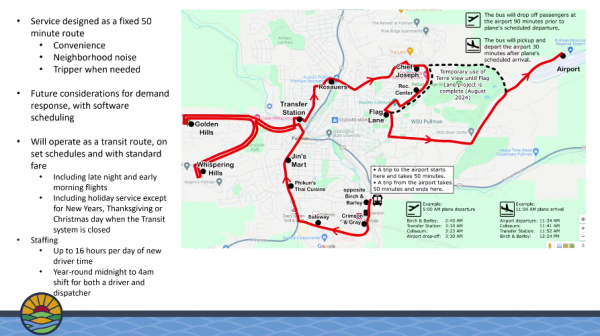Per capita water use continues to decrease in Pullman
Average Pullman resident used 88.1 gallons of water a day in 2018, compared with 99.7 in 2015
April 1, 2019
The average daily water usage per person has gradually decreased over the last few years in Pullman, despite an increasing population of water users, according to the 2018 Unaccounted Water Report for the city of Pullman.
In 2018, the average amount of water used per capita in Pullman was 88.1 gallons a day for a water use population of 27,745, compared to 99.7 gallons daily average use per capita in 2015 for a water use population of 25,179.
Public Works Director Kevin Gardes said these measurements were gathered by meters that measure water use from homes, businesses and buildings in Pullman.
Gardes said these meters can have a margin of error of 5 percent on their measurements, but the city of Pullman regularly calibrates the meters to maintain their accuracy.
The community has contributed to this gradual decline in water use, Gardes said.
He said the city has offered toilet rebates to incentivize people to use more water-efficient toilets. The city improved its plumbing code and worked to prevent and fix leaks. WSU installed water-efficient fixtures to reduce campus-wide water use.
Art Garro, the city’s maintenance and operations superintendent, said the community’s water use is decreasing because people are doing the little things. People are taking actions like switching to water efficient toilets and fixtures to help conserve water, and he expects people will continue to take these kinds of steps.
Gardes said the decrease in per capita water use is evidence that public education campaigns by organizations like the Palouse Basin Aquifer Committee were effective.
“It’s working,” he said, “but we can’t rest on our laurels.”
He said Pullman uses less water now than it did in 1992 despite an increasing population. The Palouse Basin Aquifer that Pullman, Moscow, University of Idaho and WSU all rely on for water supply is still declining, but the rate of that decline has decreased.
Gardes said the Palouse Basin Aquifer Committee is developing new models to understand how to sustainably use the water supply.
Garro said these communities have been good stewards of the water supply and have made great efforts in the name of conservation.






















